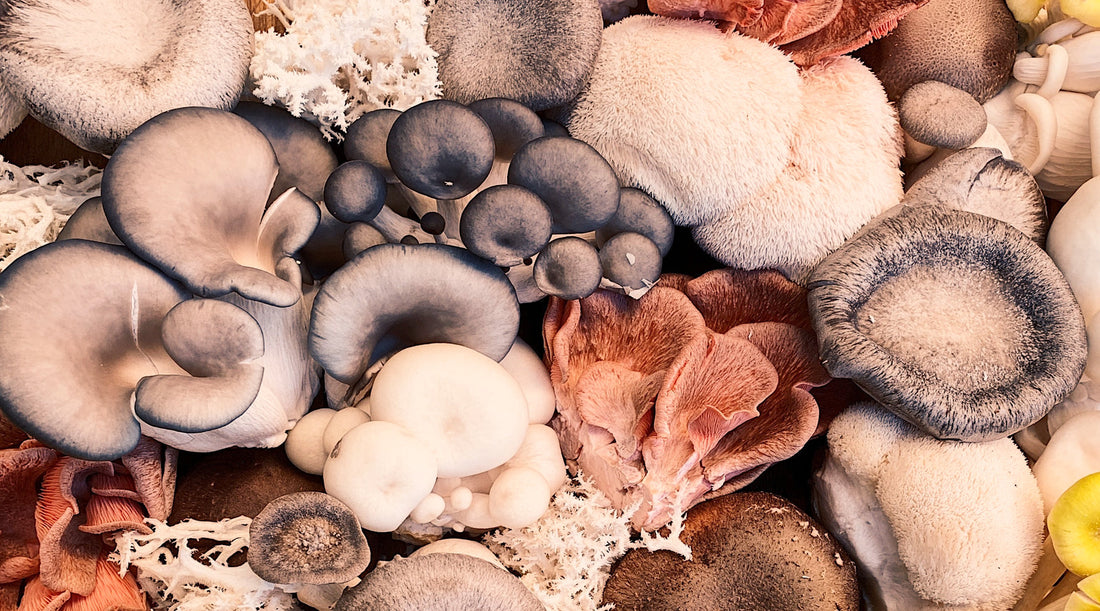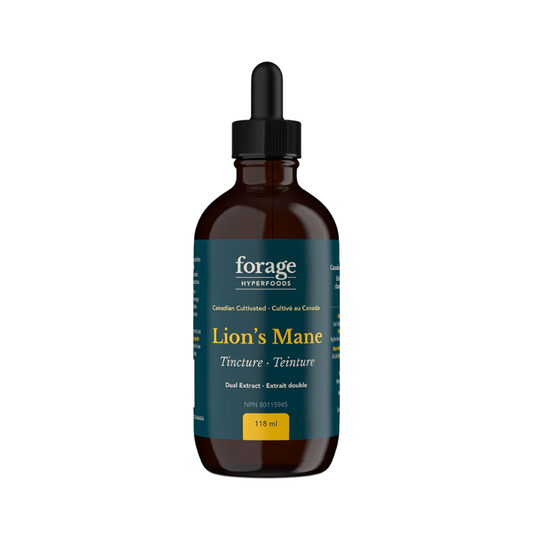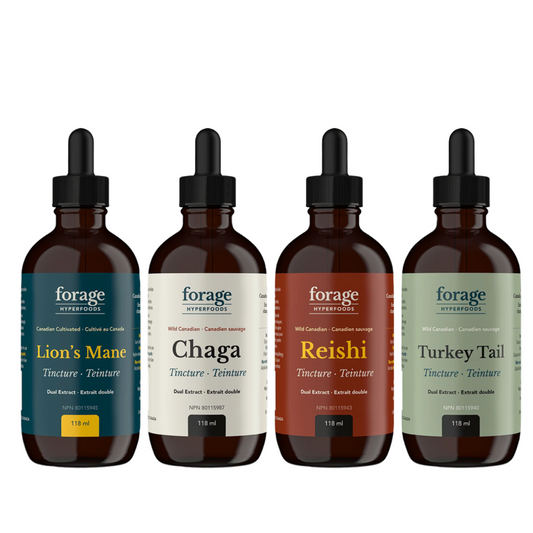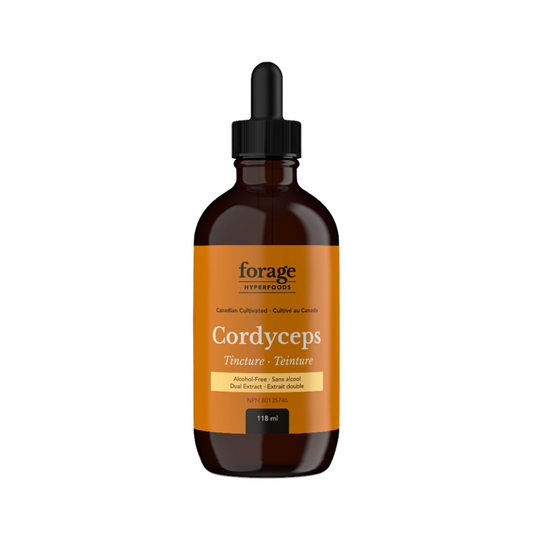
Fruiting Bodies and Their Importance
Share
If you’ve been researching functional mushrooms and their benefits, you’ve probably come across the term “fruiting body.” If you’re still learning about mushrooms, this probably led to some head-scratching and quizzical facial expressions. Don’t worry—we’re here to clear up any confusion. In this article, we’ll be discussing what fruiting bodies are and why they’re so important in the mushroom world.
What is a fruiting body?
The quintessential stem and cap that come to mind when imagining a mushroom are called the fruiting body. Fruiting bodies come in many shapes, sizes, and colours and contain the fungal organism’s reproductive structure. Its main purpose is to reproduce and help spread spores of a fungus so that they can colonize elsewhere and continue growing.
While the fruiting body is the only visible part of the mushroom, the majority of the fungus exists underground as a web called mycelium, which gathers resources from the environment to support the growth of the fruiting body. Think of it like this: the fruiting body is like an apple while the mycelium is akin to an apple tree.
Fruiting bodies are very nutrient-rich
The fruiting body is the most nutrient-rich, efficacious part of a mushroom, as that is where the mycelium sends the nutrients it obtains from feeding off organic plant matter like wood, soil, or leaves (referred to as a substrate).
The fruiting body offers natural compounds in much higher amounts than the mycelium, most notably beta-glucans, a type of sugar found in the cell walls of functional mushrooms. You’ll find over ten times more beta-glucans in the fruiting body than you will in the mycelium. These health-promoting sugars have been shown to support immune system modulation, gut health, heart health, and blood sugar management.
Fruiting bodies also offer more minerals, including phosphorus, copper, zinc, and potassium, and vitamins, including vitamins C and D.
Fruiting bodies vs mycelium supplements: which is better?
Typically, mushroom supplements contain either the fruiting body of the mushroom or mycelium, the mushroom’s root structure. In terms of health benefits, the difference between these two types of supplements is huge. The beneficial compounds you’re looking for, namely beta-glucans, are located primarily in the fruiting body of the mushroom—not the mycelium. Some mushroom supplement companies, however, opt to grow mycelium on grains like rice or oats, grind it all up, and sell it as a “mushroom powder.” This is an attractive method from the manufacturers’ point of view, as it drastically cuts production time and costs. The reality is, however, that this method produces a subpar product that doesn’t actually have any mushroom in it because it’s lacking the medicinal part of the mushroom—the fruiting body.
When you purchase mycelium on grain supplements, you’re essentially paying for a product that’s mostly grain and almost completely void of the beneficial compounds you’re seeking. You can easily tell whether or not a mushroom supplement is derived from mycelium by looking at the ingredient list. It will say “myceliated brown rice” or something similar.
Choose real mushrooms
At Forage, all of our mushroom supplements are derived from fruiting bodies. Additionally, we use ultrasonic extraction technology to produce high-potency extracts that feature all of the fungi’s beneficial polysaccharides, triterpenes, and vitamins. This method of extraction is more efficient and produces more nutritionally-dense extracts.
When you consume our supplements made from fruiting bodies, you’ll be receiving nothing but the potent, effective, concentrated compounds as nature intended them. It’s a difference you’ll be able to not only taste, but feel.



